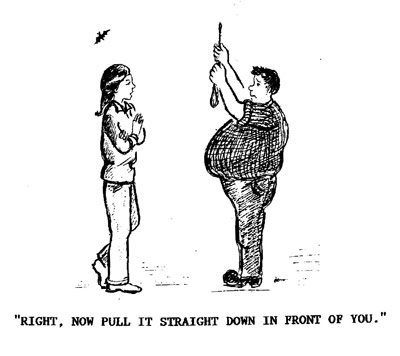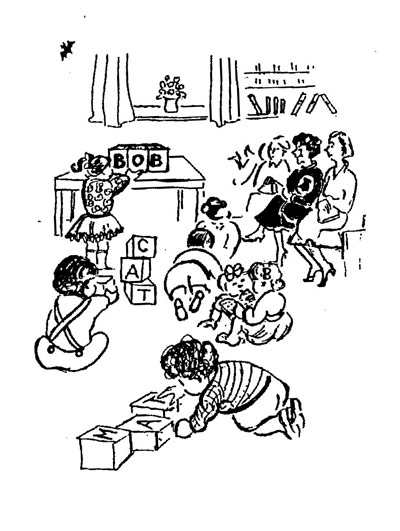BELL HANDLING, ROUNDS AND BELFRY ETIQUETTE
by John Heaton
Answer a, b or c for the following questions.
1. A bell is normally made of :
a) bronze (copper and tin).
b) brass (copper and zinc).
c) steel.
2. A bell is said to be 'up' when it is:
a) put into a safe condition for the ringers to leave the tower.
b) balanced, mouth-upwards.
c) set at backstroke.
3. When the treble ringer calls 'Treble's going" you should:
a) take hold of your rope.
b) pull the bell up to the balance.
c) start to ring your bell.
4. When pulling off (ie starting to ring) in rounds, you should pull your rope:
a) just after the treble ringer starts to pull.
b) just after the ringer preceding you starts to pull.
c) about half a second after the ringer preceding you starts to pull.
5. You have started to ring in rounds and you decide that your rope is too short. Should you:
a) stop at once and get a box.
b) ask the conductor if you may stop and get a box.
c) stand on tip-toe and manage as best you can.
6. Whilst you are ringing, you feel you are about to do a large sneeze. Should you:
a) stop at once and get your sneeze over with.
b) ask the conductor if you may stop for a sneeze.
c) sneeze whilst you are ringing.
7. Whilst you are ringing, a baby crawls up to your feet (this is quite plausible in some towers). Should you:
a) stop at once and remove the baby.
b) ask the conductor if you may stop and remove the baby.
c) keep on ringing and hope it crawls away again.
8. You may need to carry out some empirical research to answer this question. Your bell strikes:
a) just after you start to pull.
b) just as your hands are moving downwards past your belly-button.
c) just as your hands are moving upwards past your nose.
9. To ring your bell faster, pull:
a) sooner.
b) harder.
c) sooner and harder.
10. To ring your bell more slowly, pull:
a) later and more gently.
b) later.
c) later and more firmly.
11. If you are ringing the 4th and the spacing of the bells has settled down to 1 2 3 45 6, should you:
a) ring consistently faster.
b) ring consistently slower.
c) ring faster for a short time then resume your current speed.
12. The command to stop ringing is:
a) Stop.
b) Stand.
c) Stay.
ANSWERS.
1.a, 2.b and c, 3.b, 4.b, 5.b, 6.c, 7.a, 8.c, 9.a, 10.b, 11.c, 12.b.
